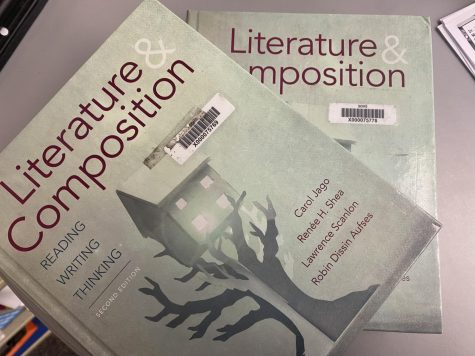AP vs Dual Enrollement: The Struggle in Keeping Sudents on One Pathway
Why some students are getting lost in the battle between what seems to be easier versus what is the right pathway in choosing an english class.
March 23, 2022
Oftentimes, juniors or seniors are told to take as many hard classes as possible, simply because it will look good on our college transcripts. However, students oftentimes struggle with choosing between AP and dual enrollment classes. Many do not even understand the difference between the two, and therefore results in students making the choice that is not in their best interest. Essentially, AP stands for advanced placement, in which students are enrolled in a year-long course. In May, students may opt to take the AP exam, and if they pass ( 3 or higher), then they should be able to receive college credit. For dual enrollment, as long as the student passes the college class itself, then they receive the credit, equivalent to that of passing the AP exam.
Even so, no pathway is either easier or harder, and is safe to say both classes are structured to challenge students.
The difference between the two different pathways and how the classes are structured. Starting with AP Language and Literature, these two English classes are intended to be of the highest rigor for junior and senior years. These classes are intended to challenge yet intrigue students about learning new ways to interpret and dissect English literature. Focusing on AP lang, this class looks specifically at nonfiction pieces of work from the different time periods, looking at various themes, and teaching students how to analyze novels through different literary devices, which will all help to develop the knowledge of how to not only answer multiple-choice questions regarding different passages applying what they have learned but also how to write essays. The three different essays are a synthesis, a rhetorical analysis, and an argumentative essay.
AP literature is very similar, in that this class applies everything that has been acquired in AP lang, in order to analyze fiction pieces of work which include short stories and poems. Students are expected to retain

the knowledge of literary devices and annotating skills in order to help them read more complex and meaningful pieces of work, especially classics (books that have become a staple in our society today, representing various themes). The main difference is that this class focuses on fiction works. Students also learn how to write three new different types of essays. The three types of essays written are poetry analysis, prose analysis, and literary argument. Karson Riley describes how she “chose this class because of the support from teachers, and I wanted to stay on the same pathway; it looks better for college.”
So, why doesn’t everyone who wants a challenge just take these classes, it seems compelling enough? Dual enrollment has actually gained popularity over the years, being just the perfect choice for some students. The stress of not having to take a big exam at the end of the year for the class to essentially count for something in the future. The idea students are more independent; teaching themselves the material and able to go at their own pace, and not having to follow a direct structure. “Our teacher gives the assignment, tells us what to do, mostly independent, and it is all online. Students are mostly on their own, with the exception of a couple of partner or group projects. ” said senior Viviana Ponce. Above all, if students are able to pass the class, they will get college credit, without it all depending on one singular exam.
The struggle that has been evident lately is how drastically smaller AP classes are getting from junior to senior year, especially in the English department. What is usually the case is a student ops to take AP Lang their junior year, but instead of staying on the AP pathway to take AP Lit, they choose to instead do dual enrollment, believing this will be easier, especially because they do not have to take the cumulative exam at the end of the year. The problem with this thinking is that if a student has already taken AP lang, by not taking AP lit, which is the course that goes hand in hand, will be essentially losing a semester and not learning anything. The way dual enrollment works in comparison to AP, the first semester is equivalent to AP lang, and the second semester is equivalent to AP lit. Instead of benefiting the student, it actually harms, leaving students unable to further their knowledge.
Our school needs to do a better job of keeping AP students on the pathway. Although it may be scary, it is very doable. English teacher Sarah Ruiz explains, ” I think we can encourage students that the benefits will outweigh the difficulty of the class.” However, this isn’t to say dual enrollment should not be offered to students. The focus needs to be shifted to students who take regular English junior year and want to have more of a challenge the following year. Also, students need more information on the correct course to take. Students should not be jumping from AP to dual enrollment; they need to stay on one pathway. There needs to be more support for students, so they are as informed as possible of all the options they have. Education has come a far way, and knowing that there are endless possibilities, it is only right that students are as informed as possible as to what will benefit them the most in the future.

